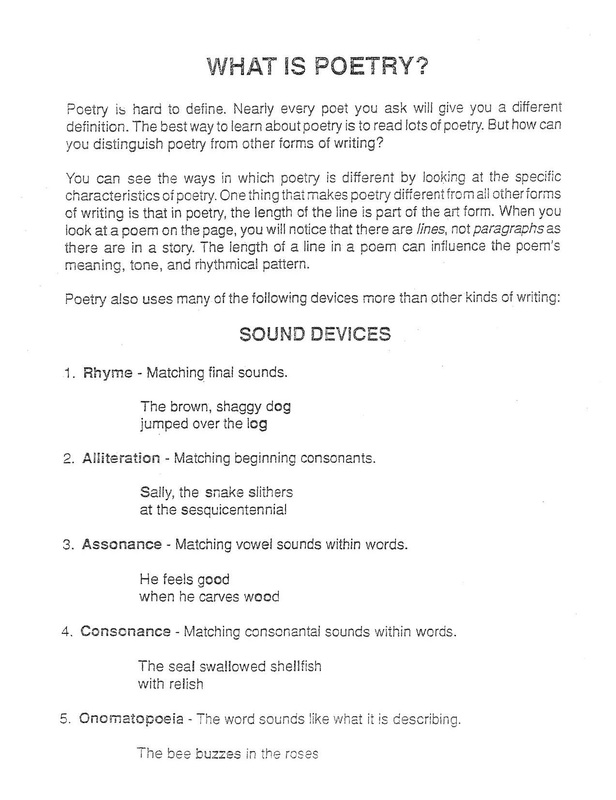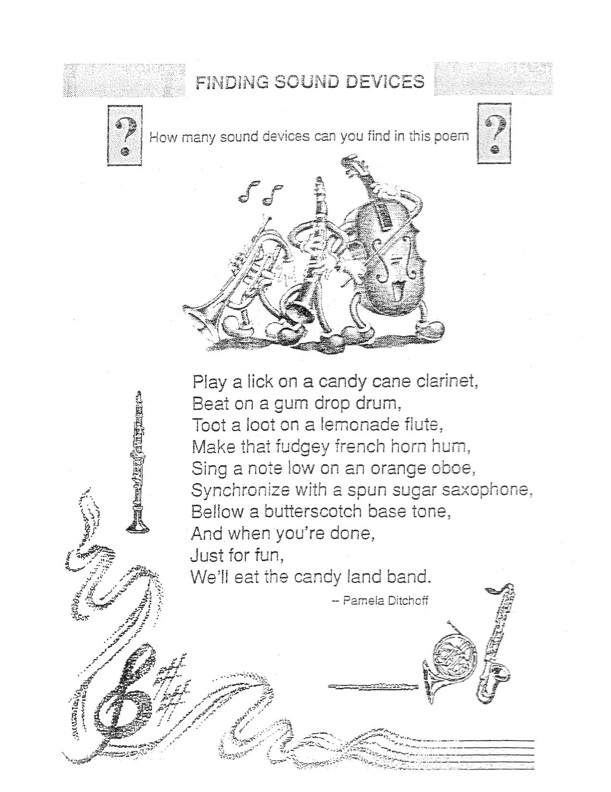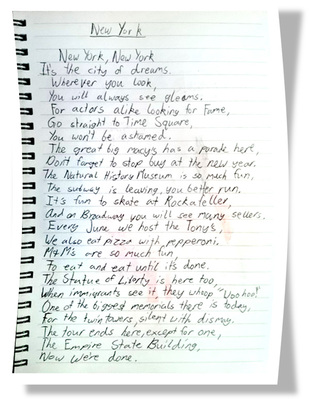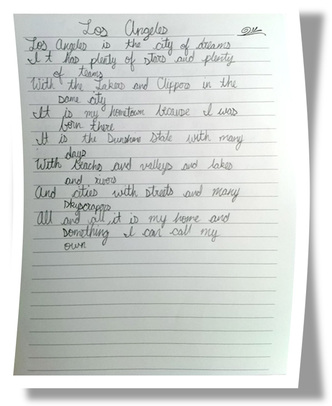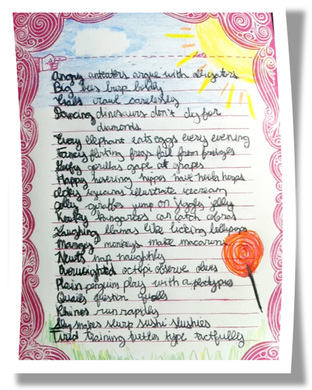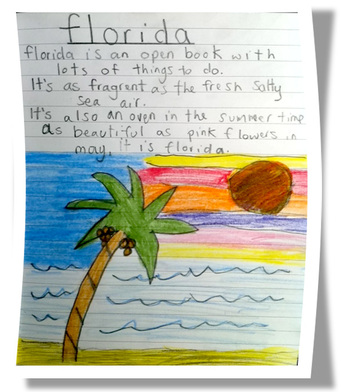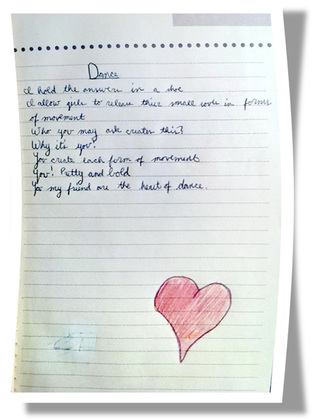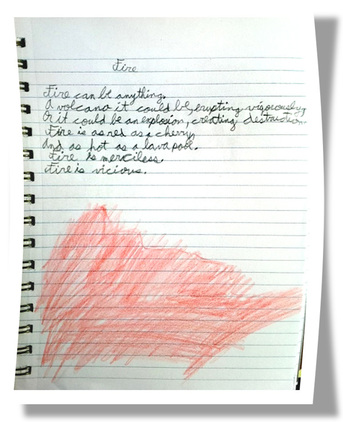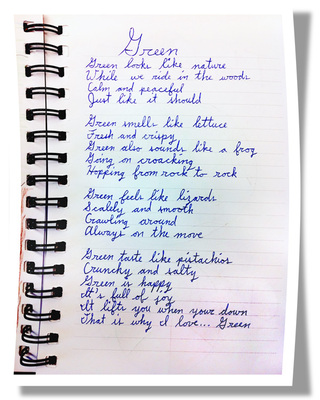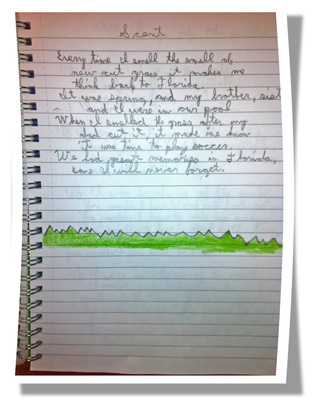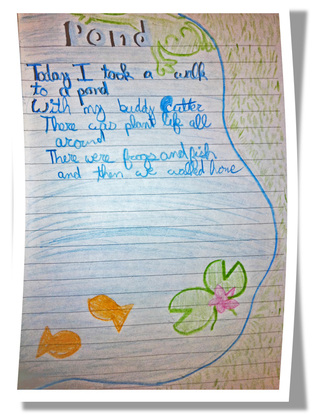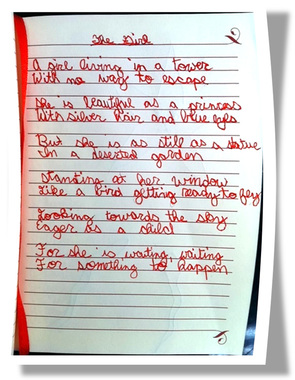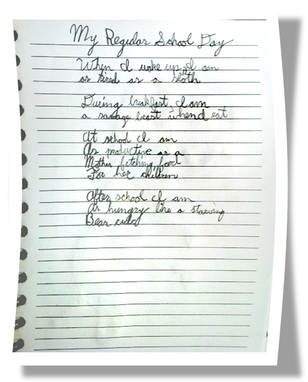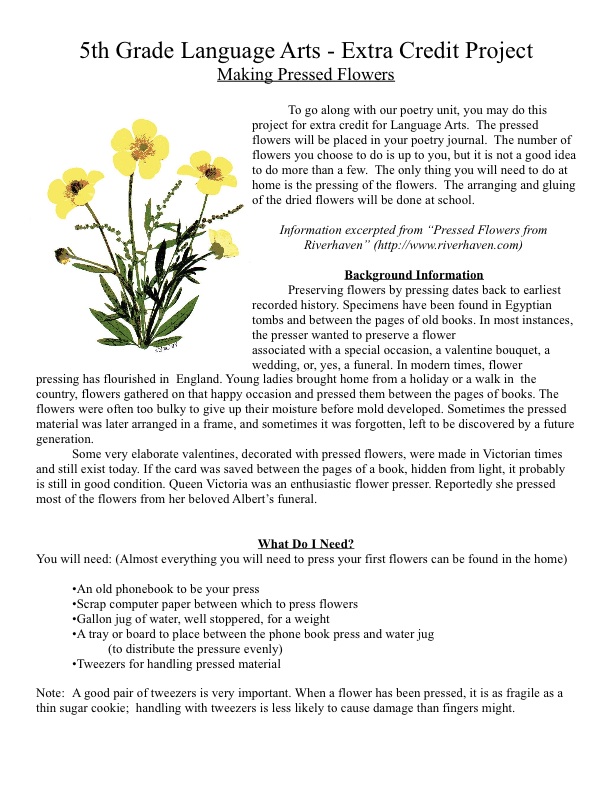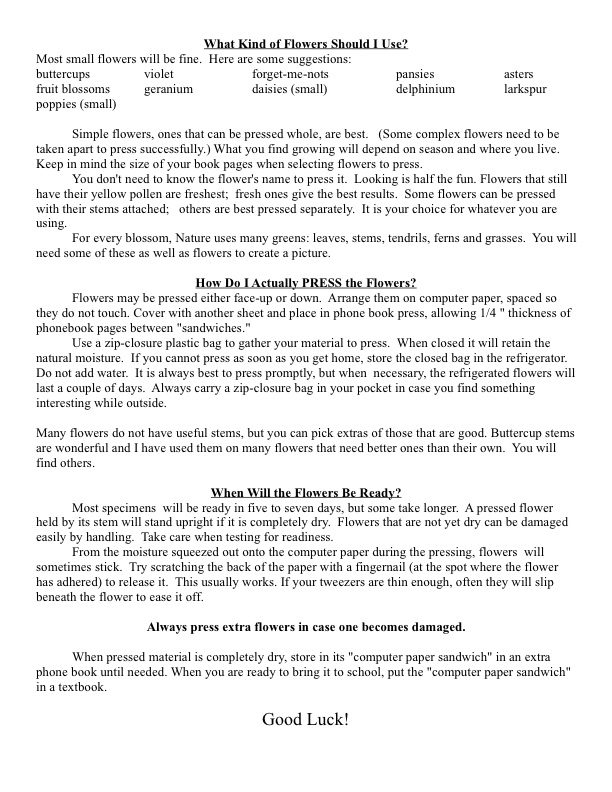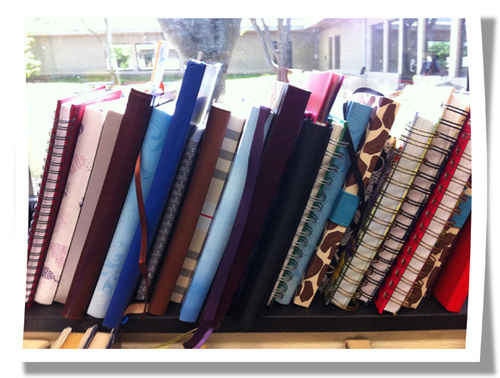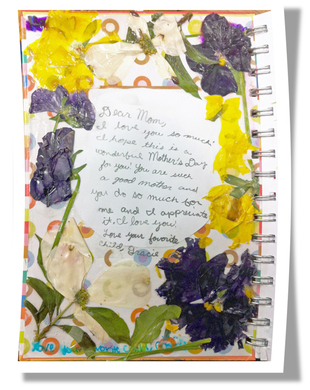
Poetry Journals
Each spring I do a unit of poetry with our fifth graders. With our reading-focused curriculum, it is a refreshing opportunity to teach creative writing and poetic elements.
Students are asked to bring in a poetry journal, a hardcover blank book with lined pages, into which they will copy their final pieces. Since we always do this project in the spring, the journals go home in time for Mother's Day and make a special and personal gift to our students' families.
For a number of years we have used Pamela Ditchoff's Poetry 1-2-3 program as the basis for our unit. It is divided into 10 lessons focused on various poetic elements, figurative language, sound devices, and forms. I always supplement with other lessons and ideas, but it has provided a useful framework for introducing poetry writing to students.
One lesson involves students looking for sound devices in a poem with a partner. After reading about rhyme, alliteration, assonance, consonance, and onomatopoeia, I give students the challenge to see how many different examples of these sound devices they can find in about 15 minutes.
Each spring I do a unit of poetry with our fifth graders. With our reading-focused curriculum, it is a refreshing opportunity to teach creative writing and poetic elements.
Students are asked to bring in a poetry journal, a hardcover blank book with lined pages, into which they will copy their final pieces. Since we always do this project in the spring, the journals go home in time for Mother's Day and make a special and personal gift to our students' families.
For a number of years we have used Pamela Ditchoff's Poetry 1-2-3 program as the basis for our unit. It is divided into 10 lessons focused on various poetic elements, figurative language, sound devices, and forms. I always supplement with other lessons and ideas, but it has provided a useful framework for introducing poetry writing to students.
One lesson involves students looking for sound devices in a poem with a partner. After reading about rhyme, alliteration, assonance, consonance, and onomatopoeia, I give students the challenge to see how many different examples of these sound devices they can find in about 15 minutes.
Most groups are able to find at least twenty different sound devices in the poem. This knowledge is then applied to a poetry writing assignment. Students are asked to think of a word they like. It can be related to a sport or activity they enjoy, it can be a place, a person, or just their favorite word. On a sheet of paper, they brainstorm as many words that are related to their word that they can think of.
As a class, I usually have someone give me a word and we all take turns adding a word that we think is related. For example, when I asked for words related to "apple," I told my students I usually think of "pie" and "Thanksgiving." Their examples included words like "red," "juicy," "applesauce," and "iPod."
Once they have their lists, I simply tell them to use the words to help them write a poem. The title of the poem is their original word and the only requirement is that they use at least two different sound devices in their poems.
Here are some examples of the "word" poems.
As a class, I usually have someone give me a word and we all take turns adding a word that we think is related. For example, when I asked for words related to "apple," I told my students I usually think of "pie" and "Thanksgiving." Their examples included words like "red," "juicy," "applesauce," and "iPod."
Once they have their lists, I simply tell them to use the words to help them write a poem. The title of the poem is their original word and the only requirement is that they use at least two different sound devices in their poems.
Here are some examples of the "word" poems.
Frequently, I'll introduce literary techniques such as alliteration, similes, and metaphors and ask students to use them in a poem. The Animal Alliteration poem is always one students look forward to writing. Writing with metaphors is often more challenging, but the results are quite creative once students get the hang of it.
Many of the other lessons are based on students exploring with their senses. In the "color" poem, students first are asked to describe all the ways the color of their choice looks. Similar to the earlier "word" poem, they begin by brainstorming a list of words that are all the same color. They then write a poem about that color in which they try to describe it using all five senses. For example, what does yellow smell like? Look like? Taste like? Sound like?
In the "scent" poem, I begin by having students smell different mystery scents in a dark jar (mostly spices). They are then asked to write what color the scent reminds them of, tying in to the recent thinking we did for the color poem. After we have discussed everyone's thoughts, I ask students to think of a scent that invokes a strong memory for them. For example, maybe the scent of pine reminds them of camping trips. They are asked to write a poem describing that scent and the memory it invokes.
For the "sound" poem, I dim the lights and ask students to listen to several tracks of nature sounds. For the first 30 seconds, they are to listen with their eyes closed and try to picture the place where they would hear this sound in nature. I also ask them to think about the feelings the sound generates for them. After a little more time, they are allowed to write their thoughts down before we move to the next sound. Students are finally asked to look over their notes and choose the sound they found the most interesting to turn into a poem. They may simply describe the sound and the place or be more creative and imagine an unfolding story with the sound as the inspiration.
"Pond" by Harper
(Click image to enlarge)
(Click image to enlarge)
Students also have the opportunity to write poems on their own without teacher direction. Many times students ask me if they can include extra poems they have written and I'm always thrilled by their enthusiasm. Sometimes they are inspired by activities or techniques we have worked on, but often these poems simply reflect students' interests, musing, and daydreams.
As an extra credit opportunity, student may press flowers at home and bring them in to decorate the inside cover of their journals. We used to teach this unit around the same time we read The Secret Garden and that was the original inspiration for the idea. I have continued to do it, although we no longer read that novel, because students find it fascinating and enjoy the opportunity to embellish their journals even more. Below are the handouts I give to students to explain the process. We sometimes watch different 2-3 minute "how-to" videos on pressing flowers, but generally students find the written directions sufficient.
